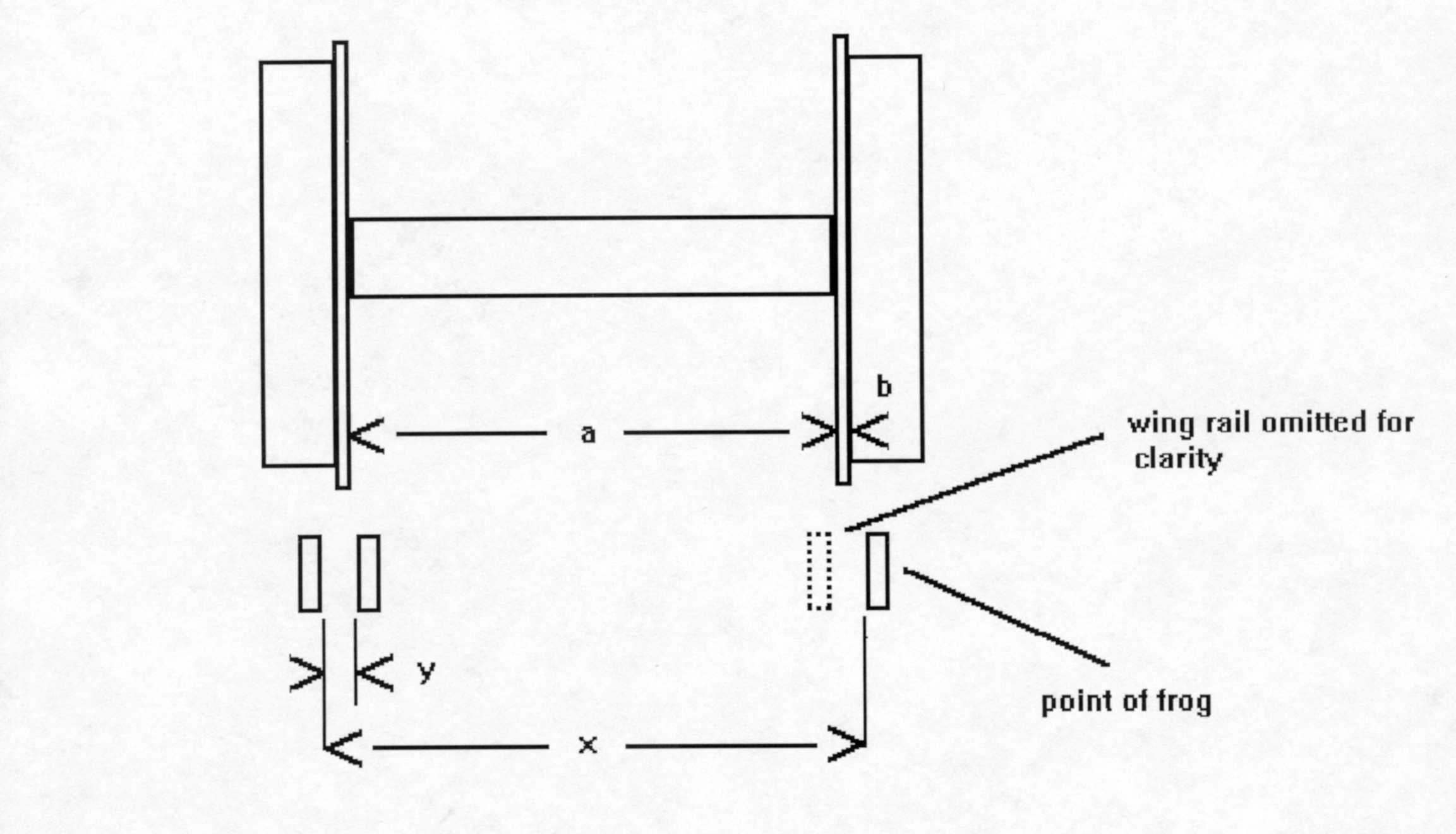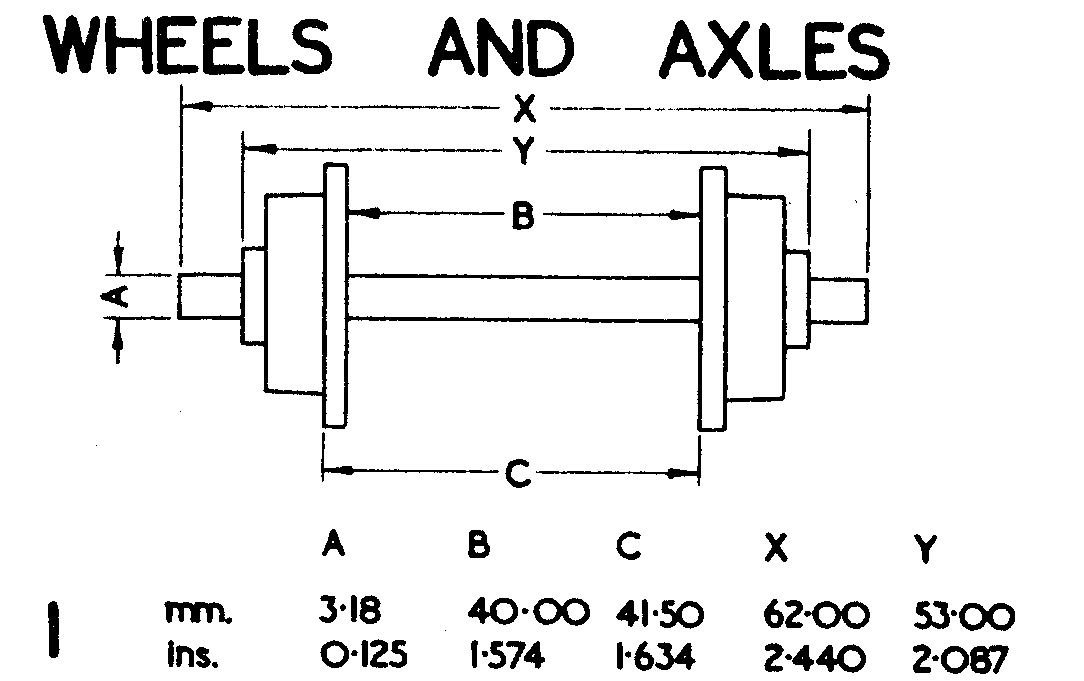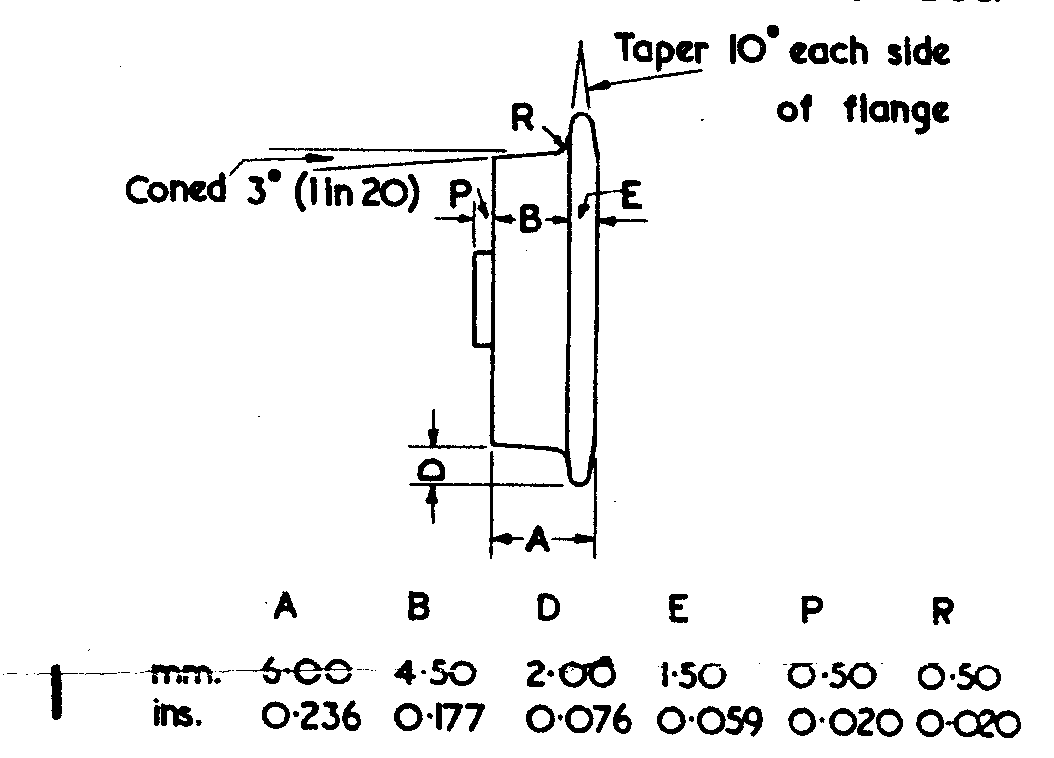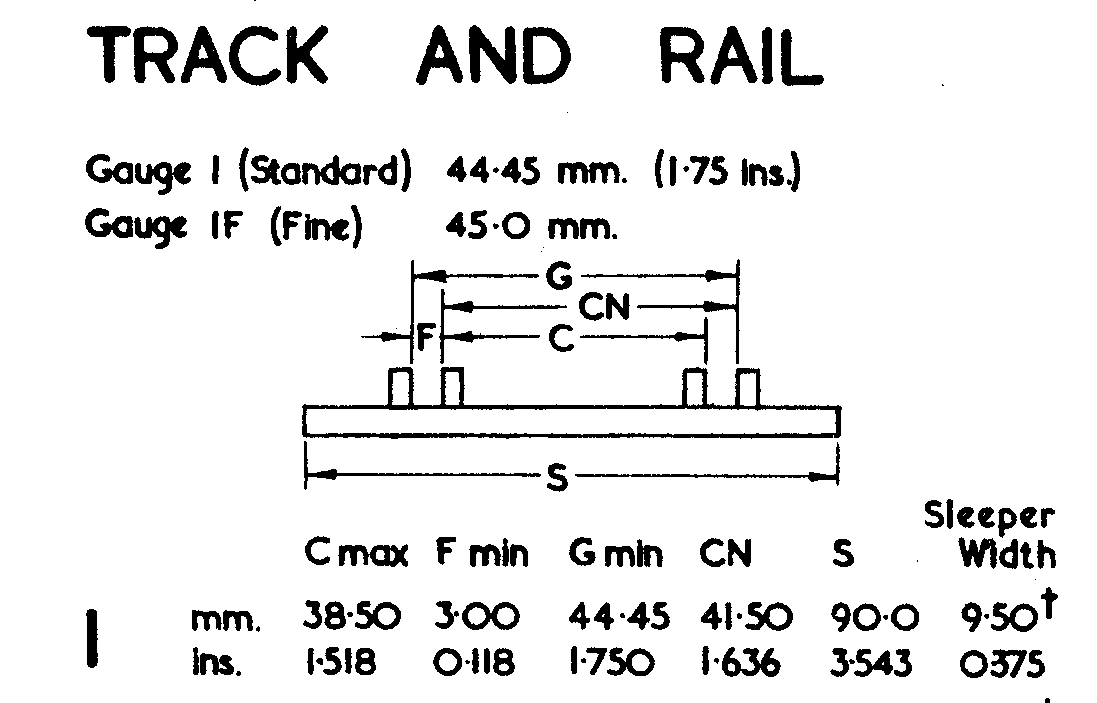10th January 2004
Also available: Standard track dimensions for 32mm gauge
Please note: The links to the NMRA website in this article no longer work (Mar 2008)
Track & wheel standards for 45mm gauge in the garden
Unfortunately the issue of standards is often misunderstood, with great emphasis placed on the back to back (btb) dimension of a wheelset and little else. When speaking of standards there are five absolutely crucial dimensions to consider. For wheelsets there are the btb and the flange thickness. For track, the gauge, the flangeway width, and the dimension over the guard (check) rail faces.
The most important relationship is that which prevents any part of the wheel flange from striking the point of the frog. Generally a train running through a switch (point) in a trailing direction will not experience difficulty unless the btb is tight on the guard (check) rails. Running through a facing switch (point), particularly on a non-tangential road, is a different matter. The greater the interference (the amount by which incorrect dimensions will allow the flange to strike the frog nose or point) the greater the potential problem. At worst the train will 'split the switch (point)' i.e. it will try to run up the wrong side of the switch (point) from which it is set and derail in the process, or the flange striking the frog will flip the wheel up and derail it. This latter problem does not require that large an interference particularly if the train is running fast, and/or the stock is light in weight. Propelling stock through pointwork when switching (shunting) is also likely to show up interference at the frog.
Hopefully what follows will be of help.

| Standards (links to sources) |
Wheel a + b
|
Track x - y
|
Compatability
|
Notes |
| GIMRA 1:30.48 -
1:32
|
41.5 (40 + 1.5)
|
42 (45 - 3)
|
Not with NMRA
With NEM 310* |
FD 2.00mm
*Possible 0.2mm lift incompatibility on depth of moulded crossings set to standard |
| NMRA 1:32. S-4, S-3 |
 
42.5 (40.5 + 2.0)
note that 2.0 mm dimension derived by subtraction. See notes |
42.5 (44.9 - 2.69)
|
Not with GIMRA | FD 1.57mm
Note: There is no published dimension for 1:32 scale in RP25 for flange thickness 'b' |
| NEM 1:32 310 |
41.8 (39.8 + 2.0 )
note that 2.0 mm dimension derived by subtraction [1.7 max stated for b] |
42.2 (45 - 2.8)
[41.8 min] |
With GIMRA
With NMRA for 1:32* |
FD 2.20mm
*Possible 0.63mm lift incompatibility on depth of moulded crossings set to standard |
| European: LGB but from measurements and articles. NOT a factory statement. |
41.9 (40.1 + 1.8)
by summation [42 stated] |
42.2 (45 - 2.8)
|
With GIMRA* [just...]
With NMRA* [but incompatible if you take btb/over guard rails into account. See table below.] With NEM * [just...under certain circumstances there would be interference at the frog point] |
FD 3.00mm
*Possible 1.43mm [max] lift incompatibility on depth of moulded crossings set to standard |
| ARISTO 1:29 - 1:24 |
-
|
-
|
-
|
-
|
| USA TRAINS 1:29 |
-
|
-
|
-
|
-
|
| BACHMANN 1:20.3 |
41.5
|
42
|
-
|
Said to be to GIMRA standards. subject to confirmation |
| BACHMANN 1:22.5 |
-
|
-
|
-
|
-
|
| LGB 1:22.5 notional
[Factory] |
-
|
-
|
-
|
-.
|
| HARTLAND ? |
-
|
-
|
-
|
-
|
Note that the wheelset dimension should be the same as or slightly less than the track dimension. If the figures are the same there is less tolerance of errors in either track or wheelset.
Note also that flange depth is also a limiting factor particularly with respect to the depth of the crossing at the frog on moulded mass-produced switches (points) intended for track power. The greater the disparity here the greater the risk of electrical discontinuity, particularly if the switches (points) are of the 'dead frog' variety. Flange depth also limits the minimum rail code used, tho the finer the flange depth the closer one is to having to consider fitting compensation/springing to cope with track irregularities which seem part & parcel of the outdoor environment. I personally consider a flange depth of 2mm to be a good median between 3mm and 1.5 or finer.
The other factor in basic compatibility is whether the back to backs
will clear the guard (check) rails.
|
Standards
|
Back-to-back
|
Over guard rails
x-2y |
Compatibility
|
Notes
|
| GIMRA ordinary |
40
|
39 [1.0mm tolerance]
|
Not with NMRA 1:32 S-3
With NEM 310 |
-
|
| NMRA 1:32 S-4, S-3 |
40.5
|
40.4 [0.1mm tolerance]
|
With GIMRA
With NEM 310 |
Not compatible with GIMRA in other respects, see above |
| NEM 1:32 310 |
39.8
|
39.3 [0.5mm tolerance]
|
With GIMRA
Not with NMRA 1:32 S-3 |
-
|
| European: LGB from measurements and articles. NOT factory statement. |
40.1
|
39.1 [1.0mm tolerance]
|
Not with NMRA 1:32 |
-
|
| ARISTO |
-
|
-
|
-
|
-
|
| BACHMANN |
-
|
-
|
-
|
-
|
| LGB [Factory] |
-
|
-
|
-
|
-
|
| USA Trains |
-
|
-
|
-
|
-
|
The back-to-back measurement must be greater than the over guard (check)
rails dimension.
My conclusion:
Note that in all these standards there are maxima and minima, but you 'may be robbing Peter to pay Paul'.
The GIMRA/NEM standards with their more generous tolerances are better
suited to operations in an outdoor environment than the NMRA standards
which seem to be more in tune with an indoor environment.
Observations:
The NMRA [no longer available] has its figures up on the 'net for all to see. The only downside is that there is not yet an RP25 wheel profile to complement the 1:32 (45mm ga ) dimensions in S-3 & S-4.
MOROP, the body responsible for NEM standards (NEM is an acronym for - translated - 'European Model Railway Standards'), has its technical specification sheets available on the 'net. The MIBA site also has some MOROP/NEM standards on the 'net.
G1MRA
Standards are now available on the 'net. [URL updated 2023]
All the standards are on the G1MRA site including those that
only relate to British Gauge I modelling. For convenience and
to avoid misunderstandings the 'Standard' wheel profile, wheelset
and the track standard are posed here for reference.
GIMRA WHEEL & TRACK STANDARDS



Note: Dimension G (gauge) of 44.45mm is a MINIMUM
And finally: All information in this article is provided in good faith. Please note that the figures are based on the latest information that I have managed to get so far (2004). There are links to sources where available.